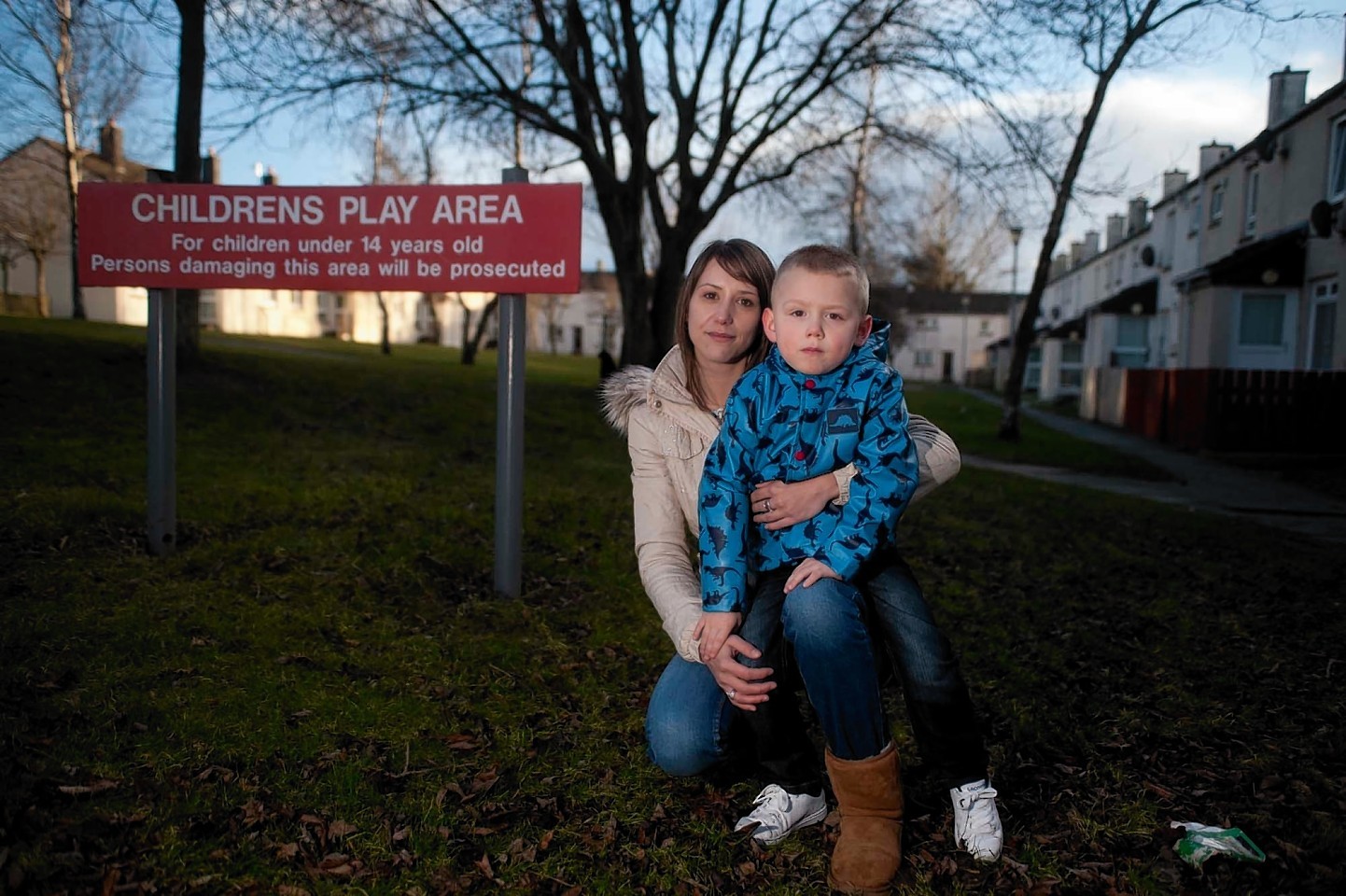Residents of a Moray community were left reeling after learning that a popular children’s play area is to be examined for unexploded World War II munitions.
Moray Council yesterday announced that areas of Elgin’s Pinefield Crescent, which is built on the site of a former army camp, will be surveyed for dormant explosives from the barracks.
Two areas of the estate were identified as requiring investigation after photographs showed that they were built over army trenches.
A council spokesman said: “A World War II aerial photograph of the former Pinefield barracks shows several military defensive trenches on what is now amenity ground within the Pinefield housing estate.
“The object of the investigation is to rule out any risk to the public from the possible presence of ordnance.
“Although the likelihood of finding any ordnance is thought to be low, it is a precautionary survey to ensure the risk is minimised.”
Pinefield parents said they were shocked to learn that the popular amenity could possibly be a danger to their children.
Melanie Robertson, 24, who has a four-year-old son named Michael, recently moved to the neighbouring Pinefield Apartments and uses the park several times a day.
She said: “I feel we should have been told about this before moving in, as Michael plays here quite a bit and taking him back and forth to school I use the park three times a day.”
Former soldier Lee Stewart, 35, said: “I have got three bairns, and I’m biding right next to a place that could have unexploded grenades in it.
“The council should have cordoned the area off as soon as they knew there was even a possibility of any danger.
“They should have made folk aware – I certainly won’t let my kids out on it until I know it’s safe.”
Supermarket worker Emma Hutchinson, 32, said: “It would have been good if the council had let us know about it as almost everyone here has kids. I have two myself.
“They really need to inform people of something like this.
“Even if they don’t find anything it’s a shock to hear that there’s a risk they could.”
Parent of three Tracey Bannerman said: “Nearly every house here has kids and it’s a commonly used park.”
The survey work will begin next Monday, March 2, and is expected to take several days.
The survey will be carried out by specialist contractors on behalf of Moray Council’s contaminated land section, who will use geophysical devices to build up a profile of what’s beneath the soil.
The Pinefield barracks were built in 1938, as the country braced itself for war.
During the conflict the site occupied 14.1 hectares with huts, buildings and other structures set around the centrally placed playing field.
The camp at Pinefield hosted British troops, allies and prisoners of war and was used for training new intakes of volunteers and conscripts.
Troops were instructed in military field work, undergoing instruction on trench and dugout construction and grenade techniques.
